
Conceptual and configuration guidance

Figma library with components for designing Native Mobile.
List
Use a list screen to provide a list of records. Lists display in a card format, showing a limited selection of the information in the record. Carefully consider what record data is important to present on the list screen. Each field added to a record’s pattern increases the space needed to display the record. Using fewer fields will allow you to present a greater number of records on your lists on the same screen. When you have determined which fields, you want on your list, select a card that best displays that information.
List screens have a filter option to give users the ability to find items in the list matching criteria they define. Consider hiding the filter to save screen space in situations where the filter does not add value.
Use top menu functions to navigate to a screen, group by a specific field. You can also open a URL, start a phone call, or navigate to another screen. For example, you can add top menu functions to call your support number or open your company website. Consider top menu functions for actions that affect an entire list, like an “approve all” action.
Use swipe action functions for record specific actions. Users access swipe functions by swiping a record to the left or right.
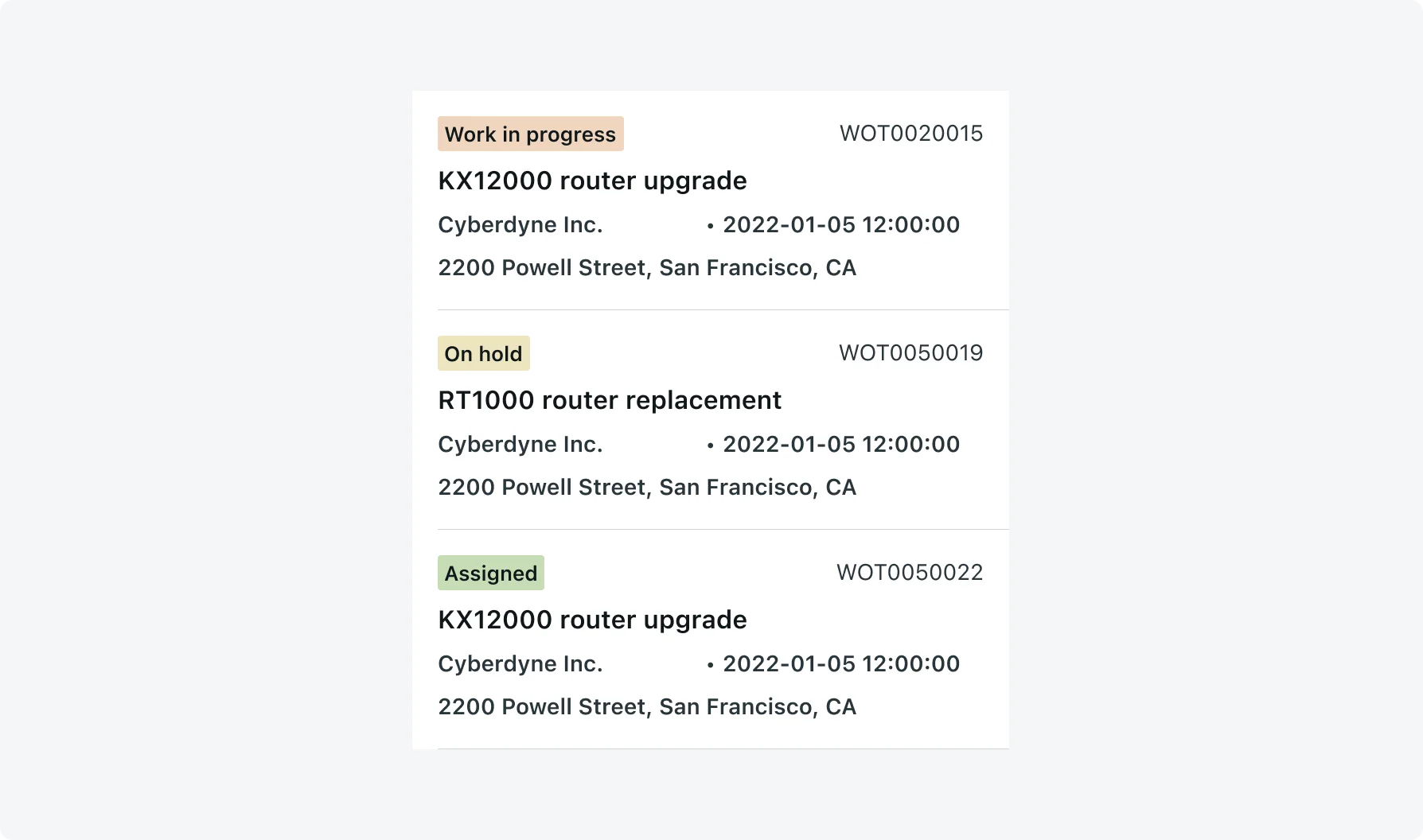
You can configure a list screen to request user input before the list appears. The list uses this input, for example, to perform a search and display the results in the list. You can also adjust the UI input parameter type. For example, it can be a QR barcode scan or date field. Other examples include using an input on a list of incidents allow the user to select attributes such as severity, priority, group and more. Note that lists containing large results can impact performance. Consider using data item conditions in addition to the user input to limit list sizes.
The architecture of a list view is extremely flexible and provides many configuration options. Please see below.
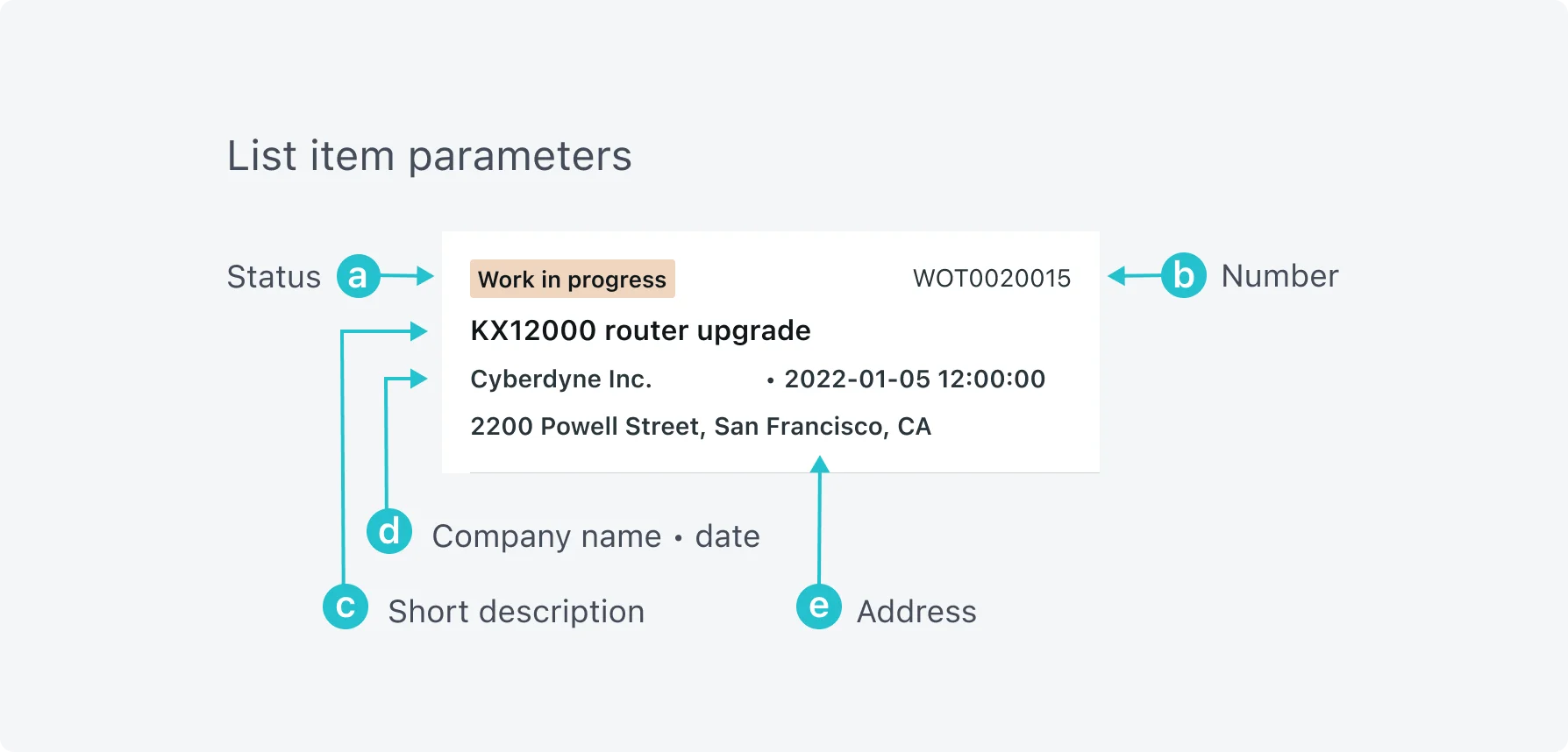
List screen segments
A list can be made up of multiple screen segments. You can use different segments to convey different sections to the user. For instance, “open” cases as the first segment and “closed” cases as the second. However, it is important to note that if using a vertical screen count, the count only displays the numbers of the first segment.
Segments act as a tabbed interface to display different types of information in your list screen. Use segments to organize information into related sections, which help your users find what they need quickly. A list may contain any number of segments. Only three segment titles can appear on your list screen at once. Avoid a negative performance impact and provide a cleaner user experience by limiting to three or fewer segments.
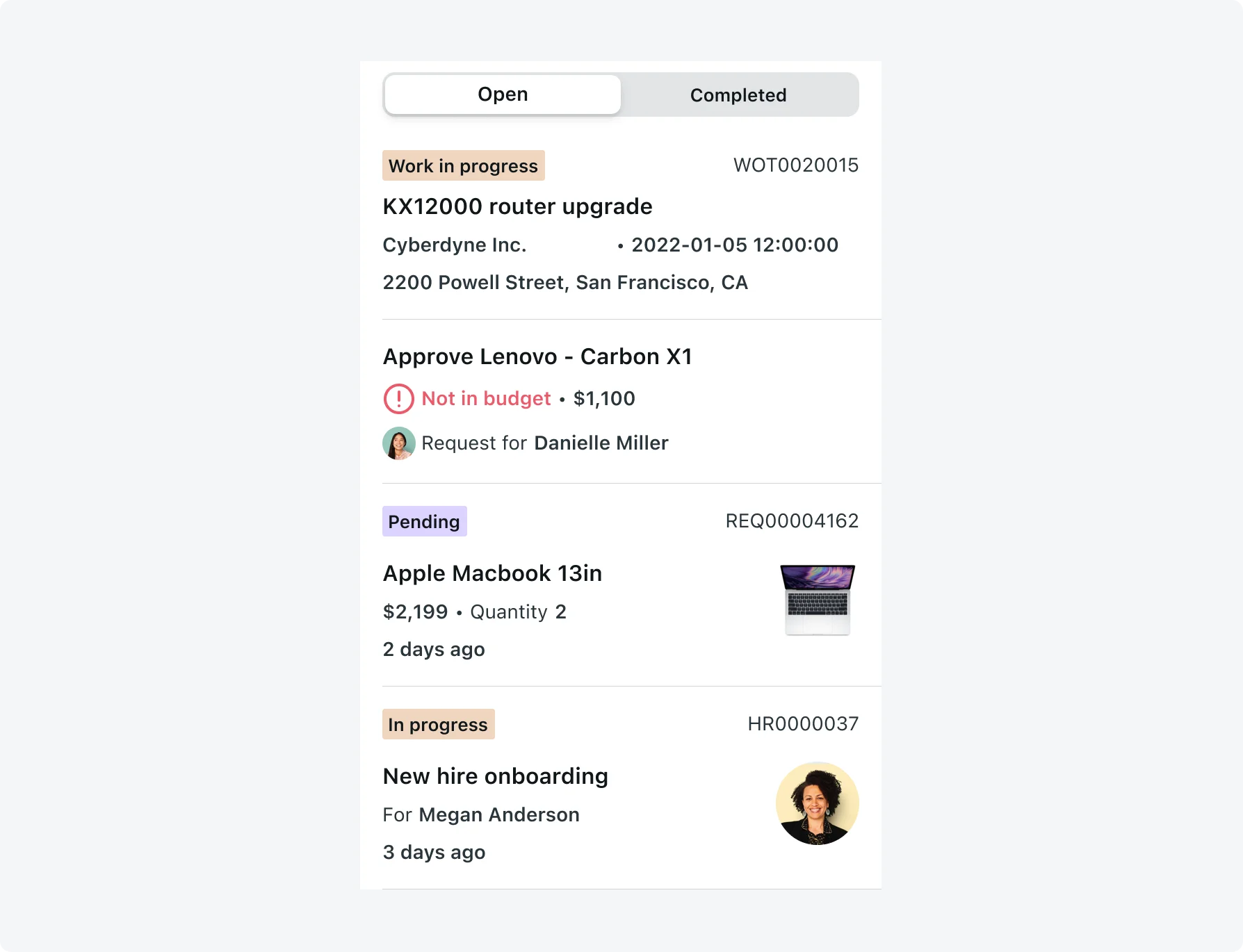
Item streams on a list
A list or list screen segment can be made up of multiple list streams. A list stream can have a separate data item and master item. Therefore, you can display multiple tables/views in one list. For example, “My To Do’s” can include Approvals, Tasks, and assigned cases. The sort & order of the list is configured on the field “Interleave Order”. This feature is supported by Mobile App Builder and platform, but not Mobile Studio.
Consider using similar card formats for your list stream to give your list a uniform appearance. Because these lists contain data from multiple tables, the filter options may contain many filter elements, which may impact performance.
Consider hiding the filter on these lists, or create a curated experience using a selective filter option that can be achieved by defining a category per list stream (Incidents, requests, work order tasks, etc.).
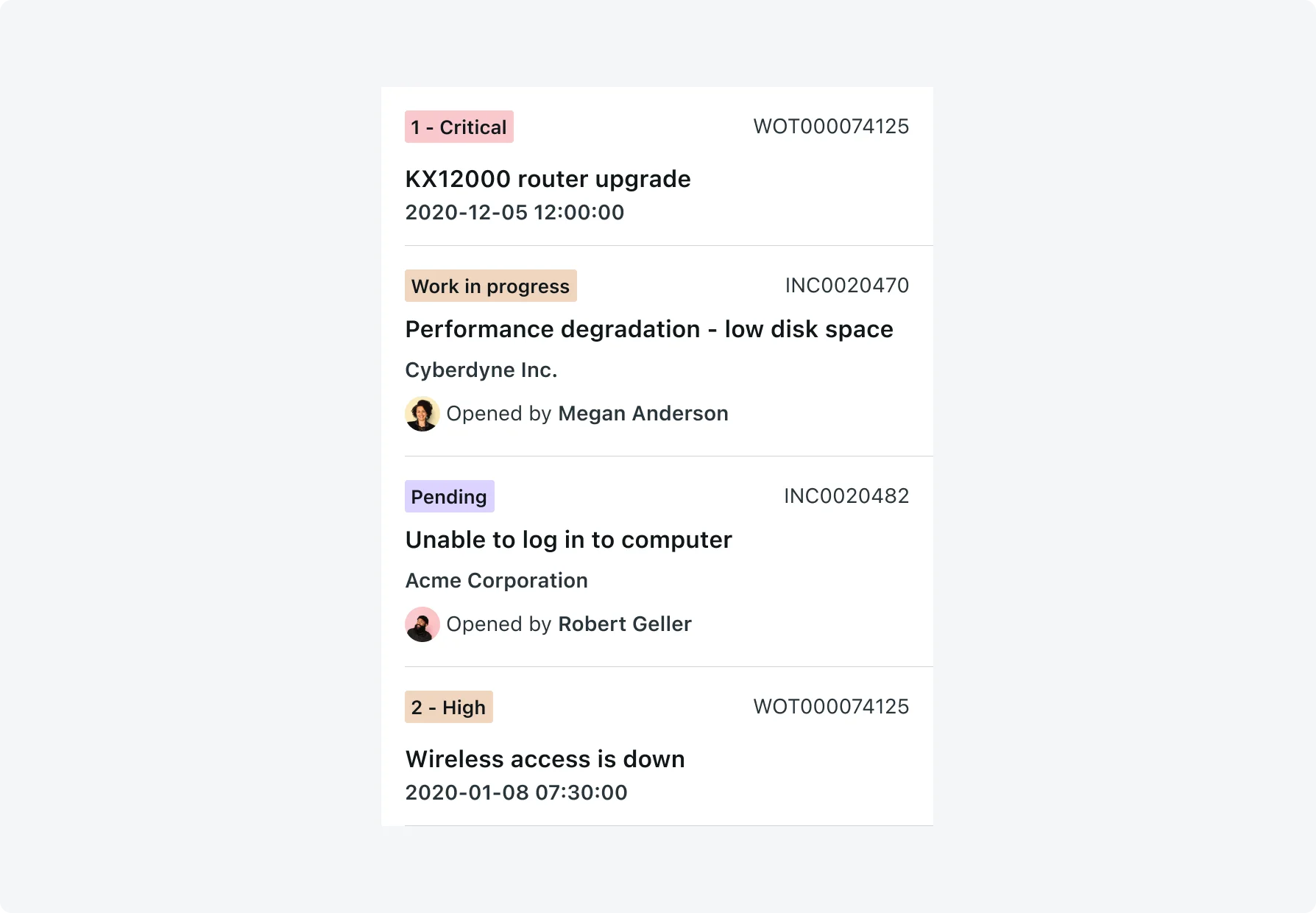
Grouped list
Use a grouped list to provide an easily navigable view of a list of items grouped by a field. For example, you can display a list of incidents grouped by category or priority. You can configure grouped lists to navigate to a second list showing the records in the selected group.
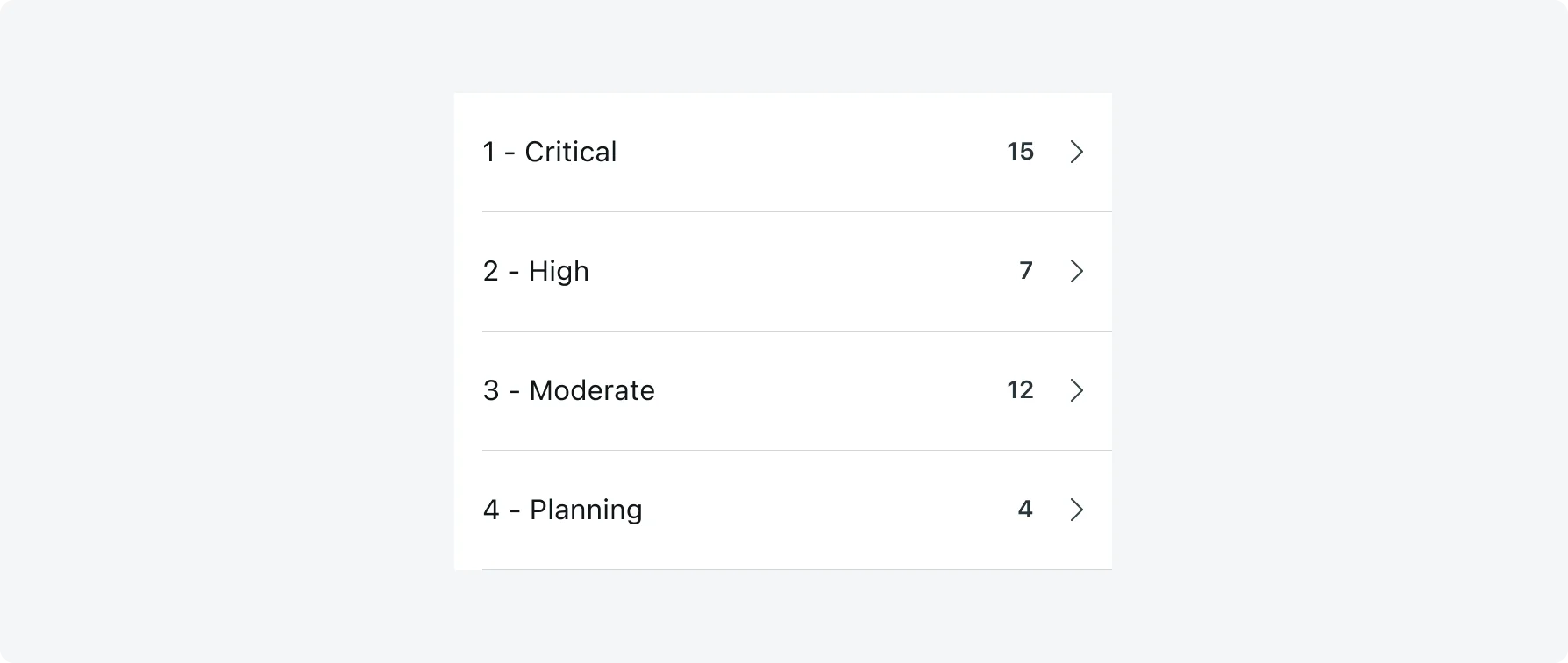
Access control
You can restrict access to the List screen for specific users by assigning User Roles. Learn more.
